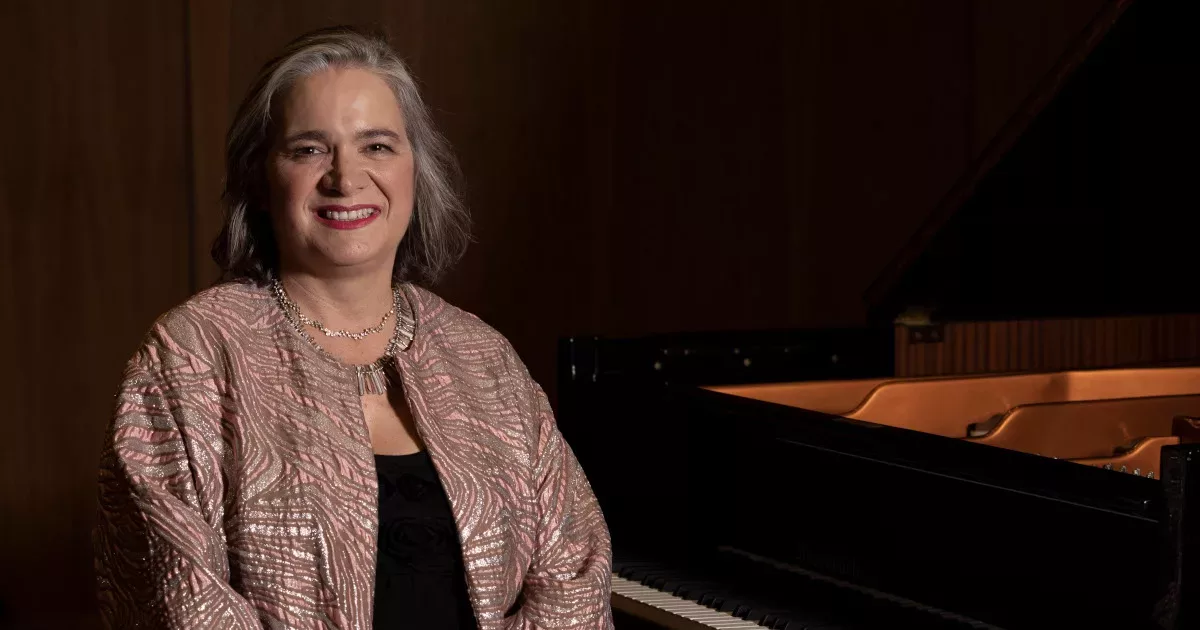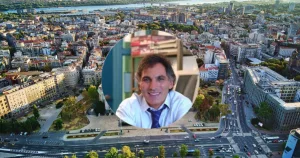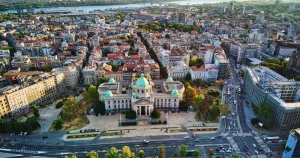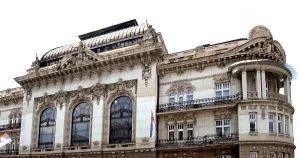Ana Telles: “Art has a vital role to play in achieving sustainable development”
As a pianist, researcher, and academic, Ana Telles brings together music, ecology, and social engagement. In this interview, she explains how her recitals become pleas for nature and how art can transform the world

You are both an artist and an academic. What has been your career path?
Ana Telles: I first studied piano at the Lisbon Higher School of Music, then I went to New York: I felt that the theoretical reflection associated with music and performance practices in my previous studies was not enough for what I wanted to do. There, I worked with Sarah Buechner. Then I went to Paris where, alongside piano lessons with Yvonne Loriod-Messiaen, I obtained a master’s degree and then a doctorate at the Sorbonne. Since then, I have pursued a career based on four pillars: artistic activity, university teaching, research in music and musicology, and management at the University of Évora, where I currently work.
How do these activities relate to sustainable development?
A. T.: Between 12 and 22, I was part of an environmental education group. We were very focused on bird watching, but we were more broadly concerned with everything related to sustainable development and nature conservation. I was passionate about it. So much so that when I finished high school, I had a hard time choosing between biology, to do research and contribute directly to sustainability, and music. I opted for the latter, but I found a way to combine the two: I use music to raise awareness about sustainable development issues and change mindsets. More broadly, as a university manager, I have always been very motivated to find ways to make art an effective tool for all the changes required by sustainable development. Taking into account that this does not only concern ecological issues: there are also social and economic issues.
Could you give some examples?
A. T.: The region where I live, Alentejo, has considerable demographic and climate problems. I put together a piano recital to highlight the main issues arising from human use of land and water and their impact on the life of birds that are endemic to this region. I asked a fellow ornithologist for help, who started by suggesting some relevant issues. Then I looked for pieces of music that could be linked to these issues. When I couldn’t find any, I provided him with alternative suggestions, which led him to change his approach. We built the script for our performance together as we went along. I discovered that when he took his “Provas de Agregação” exams, which are required in Portugal to become a full university professor, he emphasized our collaboration and the opportunity it had given him to think about environmental challenges through music. I will continue along this path as part of “Évora 2027 – European Capital of Culture.” Starting in 2025, and for the following two years, the “In the trees, the green trees” project will carry out environmental education activities in schools through music and will offer performances and sound installations in the great outdoors, in collaboration with scientists.
You mentioned projects in areas other than music. What are they?
A. T.: The University of Évora is involved, along with five European partners, in the Age Against the Machine project. Theater is used to include older people in participatory art forms in order to promote healthy and happy aging. Along research, a festival was held in June 2025 in Évora, following those in Holstebro, Denmark, Cuneo, Italy, and Goljenov, Poland, and preceding the one in Novi Sad, Serbia.
How could The Earth Humanity Coalition help you do more and better?
A. T.: It is not only about my university: we are part of the European League of Institutes of Arts (ELIA), which brings together 288 institutions, and I am a member of the executive board. We are very concerned about having more impact on sustainable development: we all have many interesting projects from this point of view. However, most of the time, in discussions on sustainable development, people talk first about science, they may open up a small space for the humanities, but art is hardly mentioned. I feel that there is goodwill, but that people who are closely associated with science do not necessarily understand the way artists think, or what role the arts can play beyond illustration and entertainment. On a political level, too, we have to fight to get recognition for the importance of these projects. I feel like we spend our time knocking on doors and saying that we want to collaborate in a fundamentally different way, one that can bring methods that may also contribute to development in other fields. For example, it is currently said that students and professionals should develop soft skills, and that we need to stimulate interdisciplinarity: all of this is at the heart of what we do. For a true Earth-Humanity Coalition, we need to feel that we are all working towards a common goal, albeit with different perspectives and different methodologies. Dialogue between art and science is not just about laboratories studying works of art from the past to understand how they were made, in order to restore and preserve them, or scientists playing the piano or violin in their spare time.
Interview by Luc Allemand
SUBSCRIBE TO OUR NEWSLETTER
To stay up to date with our projects and the development of the EHC
Read more articles

Borko Furht: “AI shouldn’t be given much autonomy without maintaining accountability”
Beyond Superintelligence: The Real Challenges of Keeping Humans ‘In the Loop’ Borko Furht is a professor in the department of

The Belgrade Declaration on Science and Art for Sustainability
The Declaration was prepared as the principal outcome of the World Conference on Science and Art for Sustainability, held in

Nalini Joshi: “Mathematics can shape a sustainable future”
Mathematical thinking can drive solutions for climate, energy and many other development issues Nalini Joshi is Payne-Scott Professor of Applied

World Conference on Science and Art for Sustainability
The Serbian Academy of Sciences and Arts hosts the WAAS-EHC event The Serbian Academy of Sciences and Arts The World